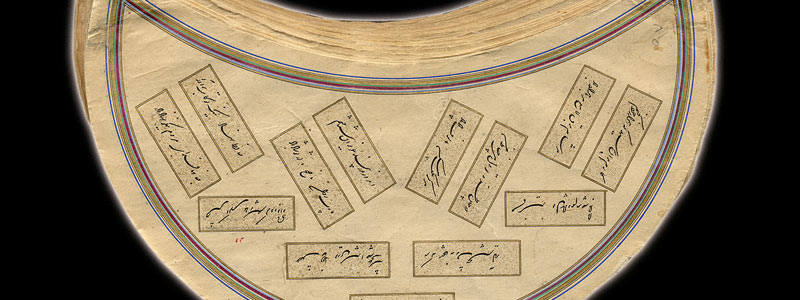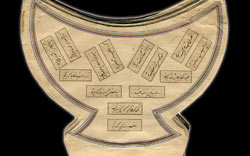Darvish ‘Abd-al-Majid Tāleghāni stands as the most skilled master of the Shakastah Nasta‘liq script. He was born in 1737 CE in the village Mehrān-e-Tāleqān-e-Qazvin, and as a young adult left his hometown and travelled to Isfahan, where he adopted the dervish life of devotion and austerity. He began practicing calligraphy by copying the works of Mirzā-Hasan Kermāni and Shafi‘ā, and in a very short span of time, mastered their styles.
The remaining works of Darvish are the product of the last fifteen years of his life, a period during which he was extremely prolific. His work carried the influence of the Shafi‘ā school until 1765 CE, when he founded his own independent school of Shakastah calligraphy that gained fame under his name. Most of his masterpieces carry signatures that date them to these years.
During the short span of his highly successful and industrious life, this genius reconstructed and perfected Shakastah calligraphy to such a sublime degree that not even a team of calligraphers working over the course of a century could have replicated his achievements. There is a distinctive quality in Darvish’s surviving works that few have been able to emulate, both in terms of quality and quantity. He was also a poet, and had his short anthology of poetry published in Tehran. At first, his poetic works bore the pen name, ‘The Extinguished’ (Khamush), but he later adopted the name Majid.
Mirzā Kuchek Esfahāni and Mohammad Rezā Esfahani can be counted amongst his most illustrious students.
Darvish died from malaria in 1771 CE at the age of 35 and was buried in Takht-e Fulād cemetery in Isfahan.




